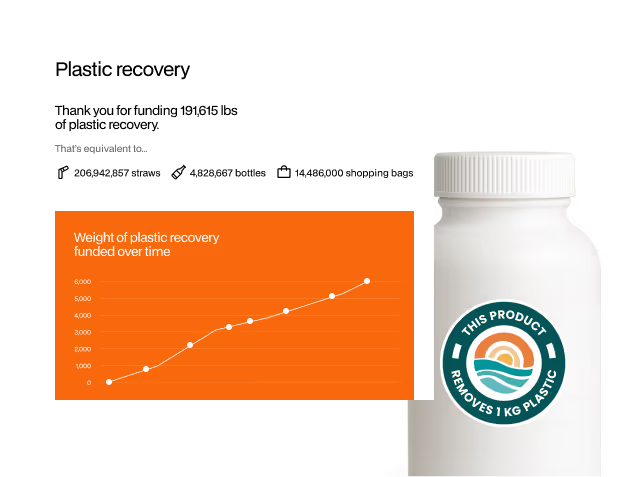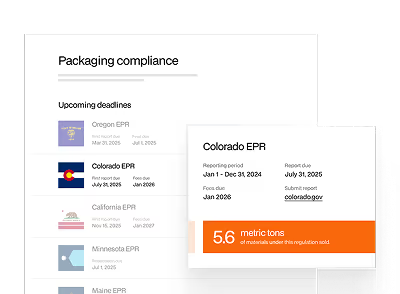News of the impacts of plastic meets us at every turn in environmental media — from dire warnings of the inefficiencies of recycling to its effects on air pollution and marine life. It’s clear that we are facing a plastic dependency issue that seems to pose more problems than any of the materials in our everyday lives, but what about the material makes it so harmful? Turns out, exactly what made it so popular in the first place.
Why Plastic?

Plastic is one of the most widespread materials used in manufacturing today, and even more widespread in everyday items like food wrappers, cosmetic bottles, and even chewing gum. It’s especially attractive to manufacturers because it can be molded into nearly any shape and dyed any color, it’s relatively lightweight and is resistant to many chemicals, and it can serve as an insulator.
Because it’s so resistant to reacting with other materials, it takes a while to break down. Most plastic is made from refining oil and natural gas, composed of long, carbon polymers that make up the various forms of plastic we know. Using these non-renewable resources, plastic has been engineered to be so reliable that it can take multiple centuries to break down.
If you drop a plastic jug of juice on the floor, you can thank polyethylene terephthalate, or PET, for allowing the bottle to land unshattered. Unfortunately, if you drop it in a landfill, it likely won’t break down there either. The only way that plastic breaks down is by photodegradation, which requires sunlight, not decomposing bacteria, to break the bonds that hold the long molecular chains together. In a landfill, most plastic will seldom receive sunlight, but when plastic pollution enters waterways, plastic is bathed in UV rays from sunlight. As the plastic breaks down into tiny pieces in the water, it can release toxic chemicals, damage aquatic ecosystems, and wash up on shorelines.
What Are We Doing Now?

One of the only solutions to our extensive use of plastic, then, is recycling. Still, the recycling process can be long and resource-intensive, requiring a number of processes along the way: inspection, shredding, and washing, separation by density, drying, melting, draining, cooling, and shredding again, and finally selling back to companies. Most plastic that enters this process will be downcycled, meaning the recycled goods will be weaker and cheaper than the original product, eventually leading to disposal.
And most plastic isn’t recycled anyway — in fact, 91% of the 8.3 billion metric tons of mass-produced plastic we’ve generated is discarded, burned, or relegated to landfills. About one-third of the plastic we produce is single-use, meaning this discarding happens in as little time as a few minutes after the product is consumed.
Future Thinking

The good news is polymers need not be extracted from oil and natural gas to form the useful packaging plastic provides. There are naturally occurring polymers, such as cellulose, soy protein, and vegetable oil, that can be refined and used in bioplastics. These products come from renewable resources and can biodegrade, allowing consumers to help close the production loop without sacrificing the functions of plastic. Some of these developments have entered the market already, with products like cellulose packaging providing an alternative to many plastic wraps. They’re often more expensive now, but bioplastic technology is advancing and slated to become more affordable in the future.
Despite its effects, plastic has allowed us to make huge technological strides in efficiency and other forms of waste reduction. Plastic packaging has significantly increased the shelf life of foods and medicine, reducing food waste by up to 1.7 pounds per pound of plastic packaging. It can also carry a significantly greater mass per unit of packaging than alternatives like glass and aluminum, which makes transporting more efficient and less gas-intensive. And it helps prolong the lives of major appliances, too, allowing them to operate more efficiently for longer periods of time.
Plastic will likely not disappear from our shelves in the next decades, but we can manage it more efficiently. It’s clear that plastic has served as a useful tool for human health and even some forms of waste reduction, but the carbon-intensive manufacturing process and long life cycle of plastic mean we cannot rely on the material for as many purposes as it serves now. Our relationship with plastic needs to change. Recycling more of our plastic products, investing in plastic alternatives, and reducing our sources of waste will help us better manage the material that has provided so much.
Start taking care of your plastic waste and go Plastic Neutral with us today. Do your part in helping keep the oceans safe by acting on your plastic footprint for about the price of a coffee a month!


.png)
.avif)

.jpg)






